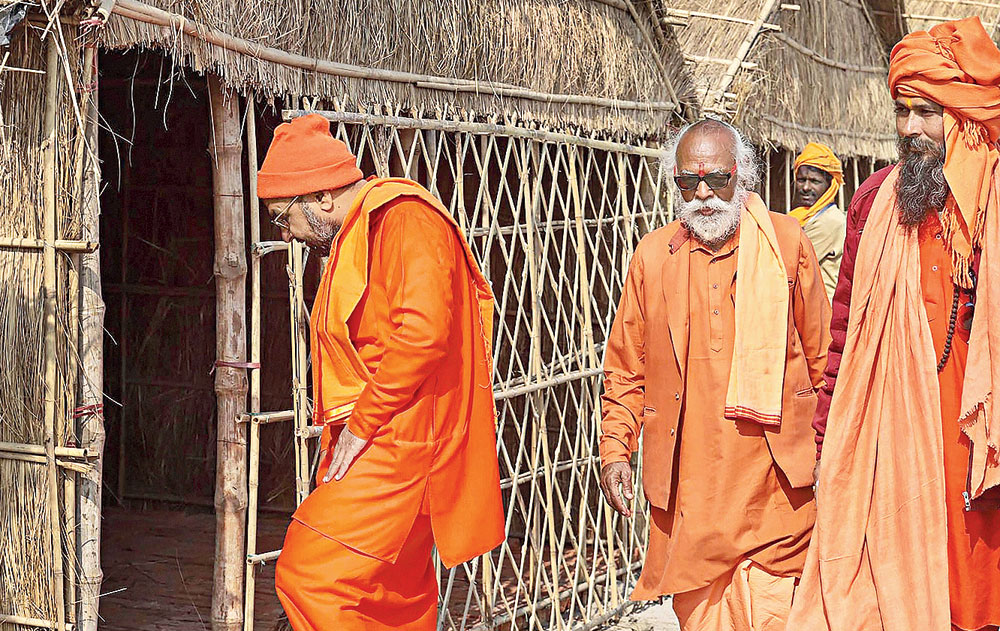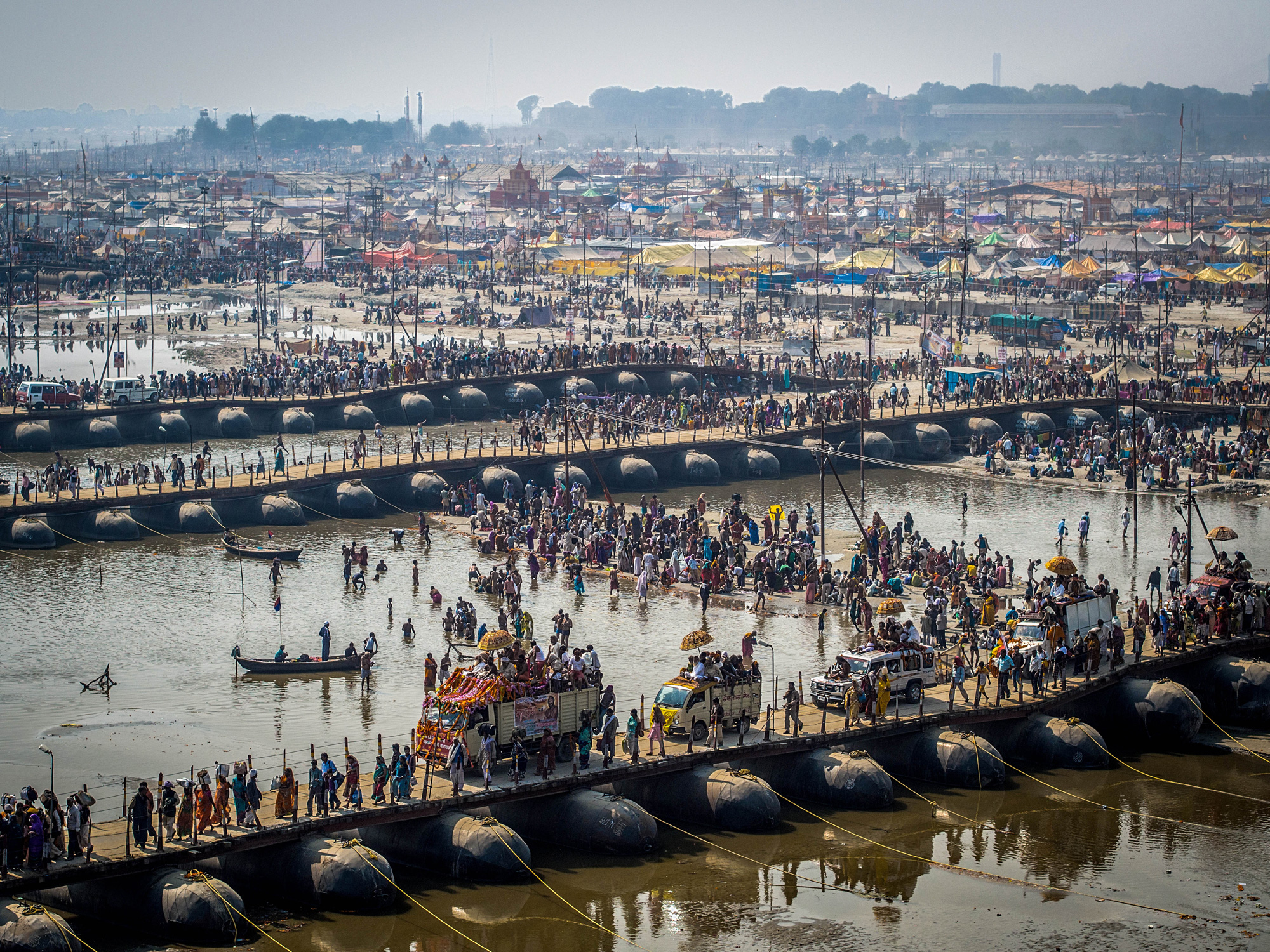The Yogi Adityanath government’s eagerness to squeeze votes out of the Ardh Kumbh Mela, scheduled just before the general election, and growing commercialisation have ensured that a centuries-old tradition has become too risky this time.
The Mela administration in Allahabad has banned the centuries-old elephant-and-horse processions during the Shahi Snan (royal bath) this Ardh Kumbh, scheduled from January 14 to March 4. The move has angered the sadhus who are determined to get the ban lifted.
Riding elephants and horses, the monks — including naga (naked) sadhus — arrive at the Sangam, the confluence of the Ganga and the Yamuna, and take the holy dip after midnight.
People from across the country visit the Kumbh and Ardh Kumbh not just to take the dip themselves but also to watch the spectacle of the Shahi Snan, held thrice during every Mela.
A large number of sadhus walked out of a police-convened meeting on Sunday when K.P. Singh, the deputy inspector-general in charge of the Mela area, told them that elephants and horses wouldn’t be allowed in this time.
“It’s a matter of safety,” Singh told reporters. “The procession of sadhus is scheduled to cross the pontoon bridges on the Ganga. It will be risky to allow the elephants and horses over the bridges. We’ll explain it to the sadhus again.”
Till now the sadhus, emerging from the city akharas (monasteries belonging to the various Hindu sects), have always taken the holy dip from the city side of the riverbanks.
That they would need to cross the river this time owes to Adityanath’s efforts at using the upcoming Mela to win votes for the BJP before the hordes of pilgrims arrive from across the country.
The rising number of pilgrims’ tents, a result of increasing footfall, had already shrunk the space on the city-side banks, prompting more and more devotees to cross the bridge and take the holy bath from the other side.
This time, the state tourism department and some private players have been allotted land on the city side of the Sangam area to set up over 20,000 makeshift cottages for the pilgrims, for which bookings have already begun.
The rent varies from Rs 500 to Rs 35,000 a day, with the higher end intended for rich customers and VIP guests. Adityanath said on Monday that his ministers would visit every state and invite their governors, chief ministers and ministers, and that foreign leaders too would be invited.
Also, to make the Mela “cashless” — in furtherance of a key campaign of Prime Minister Narendra Modi — the state government has signed a deal with Punjab National Bank allowing it to open over 100 counters in the Sangam area and issue prepaid cards to people.
All this construction will shrink the city side of the banks so much that it would no longer be able to host a mega event like the Shahi Snan.
Singh’s fears about the horses and elephants posing a safety risk are founded in history. During almost every Kumbh or Ardh Kumbh in Allahabad, an elephant or a horse steps out of line and ends up injuring — sometimes even killing — a bystander or two.
The biggest incident happened on February 3, 1954, when more than 1,000 devotees and monks died after the naga sadhus took offence at something and let the elephants and horses loose on the crowds.
Yet, never before has the procession been banned.
Narendra Giri, head of the All India Akhara Parishad, an umbrella organisation of all the 13 akharas, said the Shahi Snan would be “incomplete without a grand parade of senior sadhus riding elephants and horses”.
“This procession is what makes the occasion ‘royal’. The tradition is more than 400 years old and cannot be discontinued. It’s the job of the police and the administration to ensure that everything goes off peacefully,” he said.
“We’ll discuss the matter with the Mela administration and the state government to ensure the tradition is not scrapped.”
Every Kumbh or Ardh Kumbh features six dates for holy baths, three of which witness the Shahi Snan.
The holy bath days are Makar Sankranti (January 14-15), Paush Purnima (January 21), Mauni Amavashya (February 4), Basant Panchami (February 10), Maghi Purnima (February 19) and Maha Shivaratri (March 4). The Shahi Snan days are scheduled on Makar Sankranti, Mauni Amavashya and Basant Panchami.












